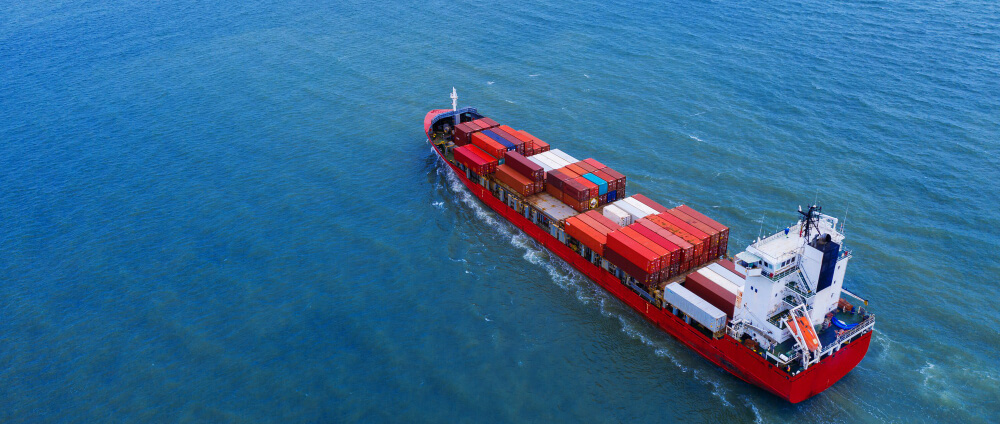What are sea cargo services?
In general, sea cargo refers to the movement of goods over oceans, seas, lakes, canals, and rivers using various types of ships, boats, floats, and other floating devices. Many commodities in the world are large in volume and weight. Moving such goods is difficult, if not impossible, by air or air-conditioned means. As a result, various modes of sea transportation are widely used.
However, in some cases, they are unable to use these methods due to a lack of free or appropriate water. Many countries export and import goods with high volume and weight through well-equipped and advanced ports.
What cargo is transported by sea?
Roll on/roll off, break bulk, dry bulk, liquid bulk, and container cargo are the most common types of cargo transported by sea.
- Container cargo
Computers, meat, clothing, televisions, and toys are all shipped in containers. Goods are typically shipped in containers with metal walls to protect them from extreme temperatures, moisture, and inclement weather. Containers can also be transported by train wagons, barges, and trucks.
- Liquid Bulk
Fuel oil, gasoline, and crude oil are examples of hazardous liquid bulk goods. They are transported to refineries and other facilities on large tankers.
Petroleum products are shipped by barge-towing trains and tankers, whereas chemical and food industry products are frequently transported by chemical tankers.
- Dry Bulk
Sand, salt, sugar, cement, iron ore, coal, and grain are all examples of dry bulk cargo. Dry bulk products are classified into two types: minor and major bulk products. Fertilizers, minerals, and cement are examples of the first category, while iron ore and coal are examples of the second.
- Break Bulk
Individual or break-bulk cargo refers to cargo that must be loaded individually and includes items such as art, household furniture, farm machinery, and vehicle parts. General cargo ships transport break bulk cargo, which is loaded into barrels, drums, crates, and boxes. Corrugated fiberboards that are weather-resistant and military in nature are also used to ship break bulk cargo.
- Roll-on/roll-off
Rolling stock in this category includes project cargo, heavy machinery, machines, and vehicles. Roll-on/roll-off cargo ports provide a variety of specialized services, including second-stage manufacturing, spraying, dewaxing, and washing, as well as repair and installation of air conditioning, hooks, bumps, and other components. Vehicle processing centers also perform pre-delivery inspections. Additional services include inventory management, fiscal representation, and cargo distribution and storage.
How does sea cargo work?
Ocean freight is typically handled as follows:
Step 1– A buyer and a seller, presumably from different countries, reach an agreement. They decide to conduct a trade transaction under an agreed-upon Incoterm, which determines how ownership and risk transfer will occur, as well as who is responsible for the shipping process and transportation costs. In an Ex Works (EXW) transaction, for example, the buyer or importer pays for the entire transportation cost, beginning at the supplier’s factory or warehouse.
Step 2- The goods are labeled and packed in accordance with shipping regulations.
Step 3- The next step is to book ocean freight, which requires the services of a freight forwarder because an exporter cannot do this themselves. Freight forwarders are in charge of booking a container for you based on what is best for your shipment.
Step 4- The goods must be transported from the supplier’s factory to the supplier’s country’s port (this can also be done with the help of a freight forwarder).
Step 5- Having your marine insurance in place is also critical (before the shipment procedure takes place).
Step 6- Depending on the volume and requirements of the trade transaction (the decision is made by the dealing parties or the freight forwarding agent), the goods are loaded into an FCL or LCL container and then loaded onto the vessel.
Step 7- After the goods are loaded onto the vessel, the ocean carrier issues a bill of lading. It is an important document in this entire process because it is a contract between the shipper and the carrier that contains all important transaction details and also serves as the title to the goods.
Step 8- After the goods are loaded onto the ship, the shipment is cleared through customs at the origin port.
Step 9- The products are then prepared for shipment.
Step 10- Once the goods arrive at the destination port, import customs clearance must be completed, as well as the payment of tariff duty on the imported goods (if duty is applicable).
Step 11- Finally, the goods must be transported from the port to the buyer’s location (which can again be done with the help of a freight forwarder).

